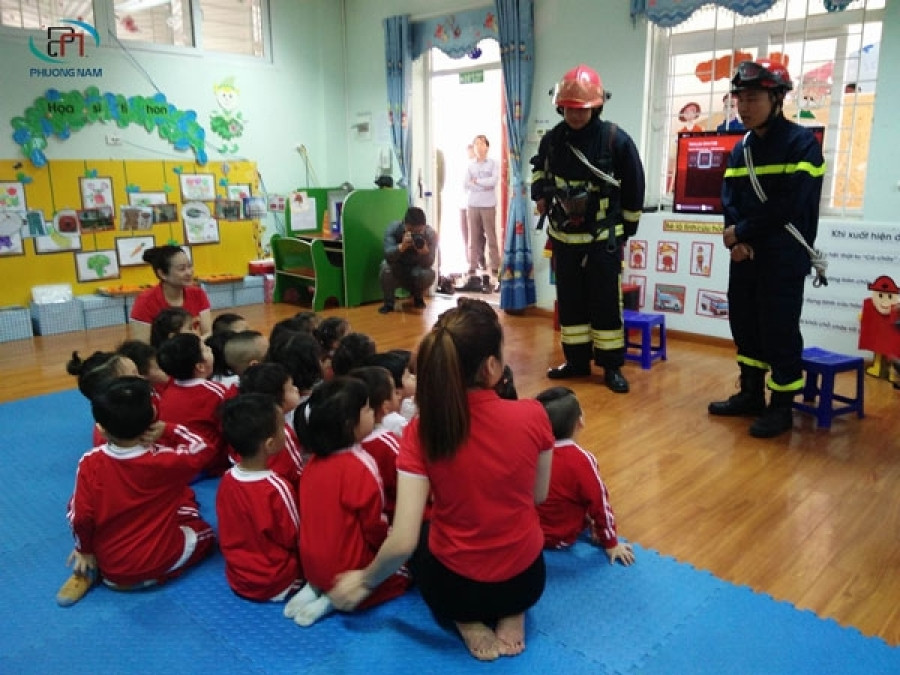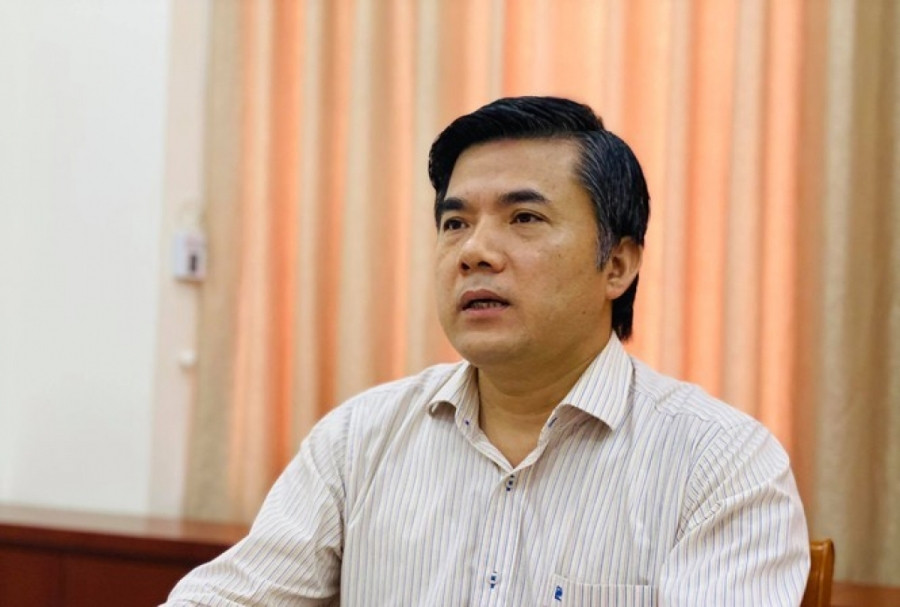
Submit a comment
The Ministry of Education and Training has just issued a draft circular on guidelines for equipping knowledge and skills in fire prevention, fire fighting, and rescue for students studying at educational institutions in the national education system.
According to the draft circular, if approved, teaching knowledge about fire prevention, fire fighting, and rescue will be applied to preschools, general education institutions, continuing education institutions, specialized schools, universities, pedagogical colleges and facilities that train teachers, and related organizations and individuals.

The Ministry of Education and Training has just issued a draft circular on teaching knowledge and skills on fire prevention, firefighting, and rescue in schools. (Illustration photo)
More than 4,000 fires occur each year, but emergency response skills are limited.
Colonel Nguyen Minh Khuong, Deputy Director of the Fire Prevention and Fighting Police Department - Rescue and Relief (Ministry of Public Security) said that according to statistics, every year the country has an average of more than 4,000 fire and explosion incidents, killing more than 100 people and injuring hundreds of others each year. Recently, people's awareness and skills in fire prevention and fighting have been significantly improved, but there are still many fires in residential areas and production facilities, the main cause of which is that people's skills are still limited, when a fire or explosion occurs, they are confused and do not know how to handle it, leading to the fire spreading and causing serious consequences for both people and property.
From this reality, with the goal of ensuring that people of all ages have skills in fire prevention, fire fighting, and rescue, educational institutions have proactively coordinated with the fire prevention and fire fighting police force to train students. However, these activities are still spontaneous, not widely replicated, and lack uniformity between schools, levels of education, and localities.
Mr. Bui Van Linh, Director of the Department of Political Education and Student Affairs (Ministry of Education and Training) said that in reality, the contents of fire prevention, fire fighting, rescue have been integrated into specific subjects in the current general education program such as ethics, civic education, natural sciences, social sciences, national defense and security education, etc. Similarly, the preschool education program has also integrated the contents of fire prevention, fire fighting, rescue.

Mr. Bui Van Linh, Director of the Department of Political Education and Student Affairs
“However, it can be seen that knowledge about fire prevention, fire fighting, and rescue in the general education program, including the new General Education Program, is very limited and mostly legal knowledge, with few practical problem-solving skills. In the total of 12 years of general education, knowledge about fire prevention, fire fighting, and rescue is less than 15 lessons. These 15 lessons are scattered across different school years, leading to a lack of knowledge, making it difficult for students to develop skills when an incident occurs,” said Mr. Linh.
According to Mr. Bui Van Linh, in the past, the education of these skills for students has not achieved the expected results because the facilities have not organized regularly and continuously, and there are no separate documents for each level of education. The staff and teachers at the facilities are still limited in their expertise in fire prevention and fighting and rescue, students have not practiced specific situations, and the equipment is lacking in quantity and type...
Applying teaching fire prevention and fighting skills, rescue from preschool level
Mr. Bui Van Linh said that when the new circular is issued, there will be specific and unified regulations in educational institutions nationwide on the content of knowledge and skills in fire prevention and fighting and rescue, ensuring consistency between levels of education and training levels of the national education system and not changing the framework regulations on the official educational programs of all levels of education and training levels. These contents will also be checked and evaluated.
Specifically, for preschool level, this knowledge will be integrated through activities of nurturing, caring for, and educating children, using visual educational methods, illustrated through physical development educational activities.
For general education and continuing education, integrate into the content of the lessons of the subject in the official education program, through experiential activities, experiential activities - Career guidance, life skills education activities and in club activities, summer activities. For higher education, integrate into extracurricular activities, coordinate with units with functions in fire prevention, fire fighting, rescue, and rescue to organize training activities, practice, and drills in accordance with the training program content of the schools.
In addition to the main curriculum, students will learn additional knowledge and skills in extracurricular activities, practice and rehearse to develop skills to respond to dangerous situations.
Regarding the skills required, Mr. Bui Van Linh said that the knowledge and skills required are built on the cognitive and behavioral abilities of each subject. For preschool children, it is knowing how to recognize fire sources, knowing how to prevent fire sources, and taking appropriate actions when hearing fire alarm signals...
For primary school students, in addition to recognition skills, there are also fire alarm skills, escape skills, and the use of body protection equipment in case of fire or explosion. Use and practice extinguishing fires with model fire fighting equipment, practice escape skills in smoke and toxic gas environments, and know how to prevent and provide first aid for common accidents and incidents.
For secondary school students, it is to recognize the causes and measures to prevent and fight fires and common incidents and accidents, and know the skills to escape when a fire or explosion occurs...
For high school students, in addition to the above skills, they also know some basic skills to search for victims, rescue victims, give first aid to victims in case of fire, explosion and other incidents and accidents, know how to use portable fire extinguishers and common fire fighting equipment, and use some initial fire fighting means with different fire sources.
For students, use basic fire fighting, rescue and first aid equipment and devices available at home, school and public areas.
In case students need to be granted a certificate of training in fire prevention, fire fighting and rescue, it must be done according to regulations.
According to VOV